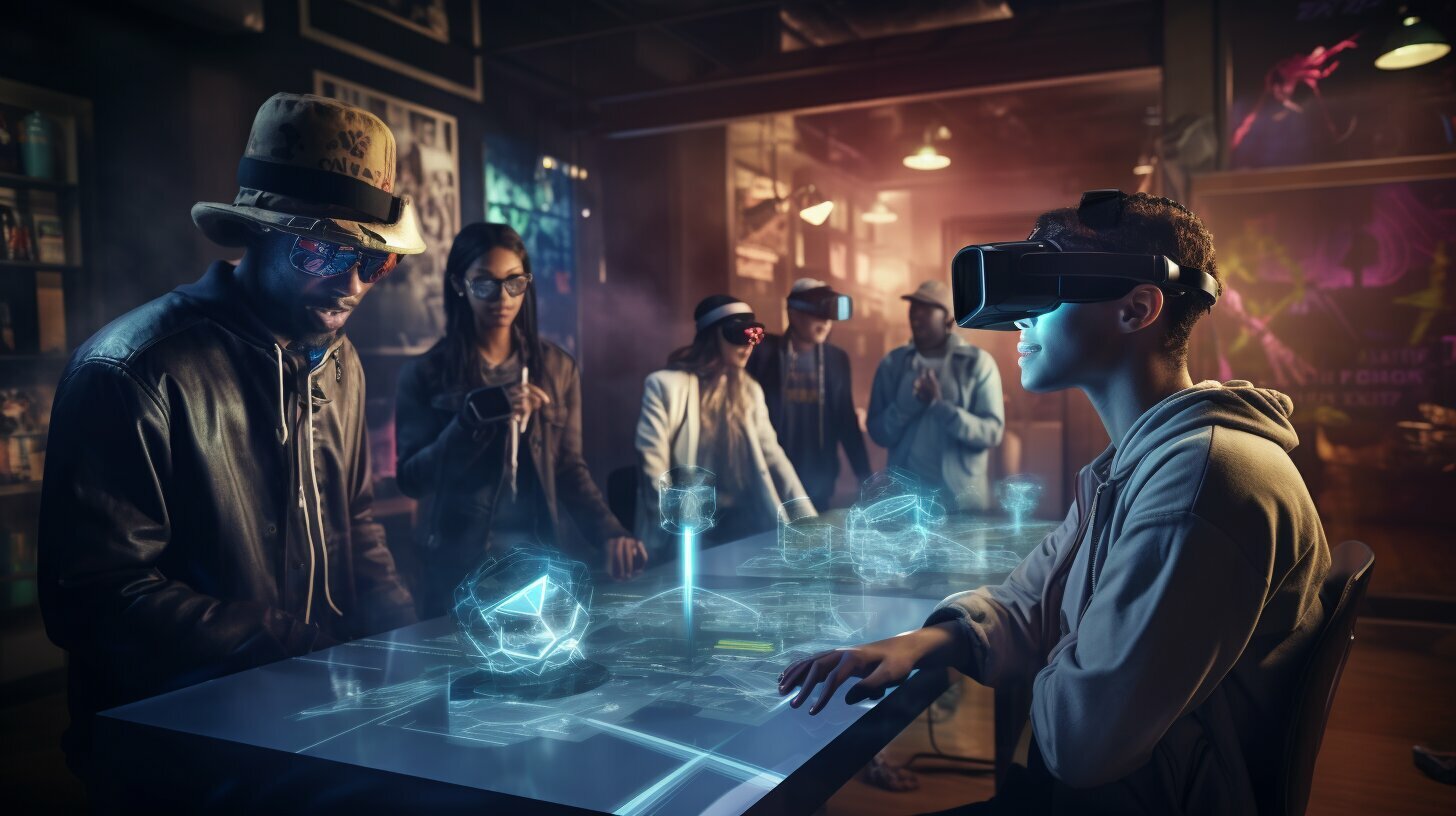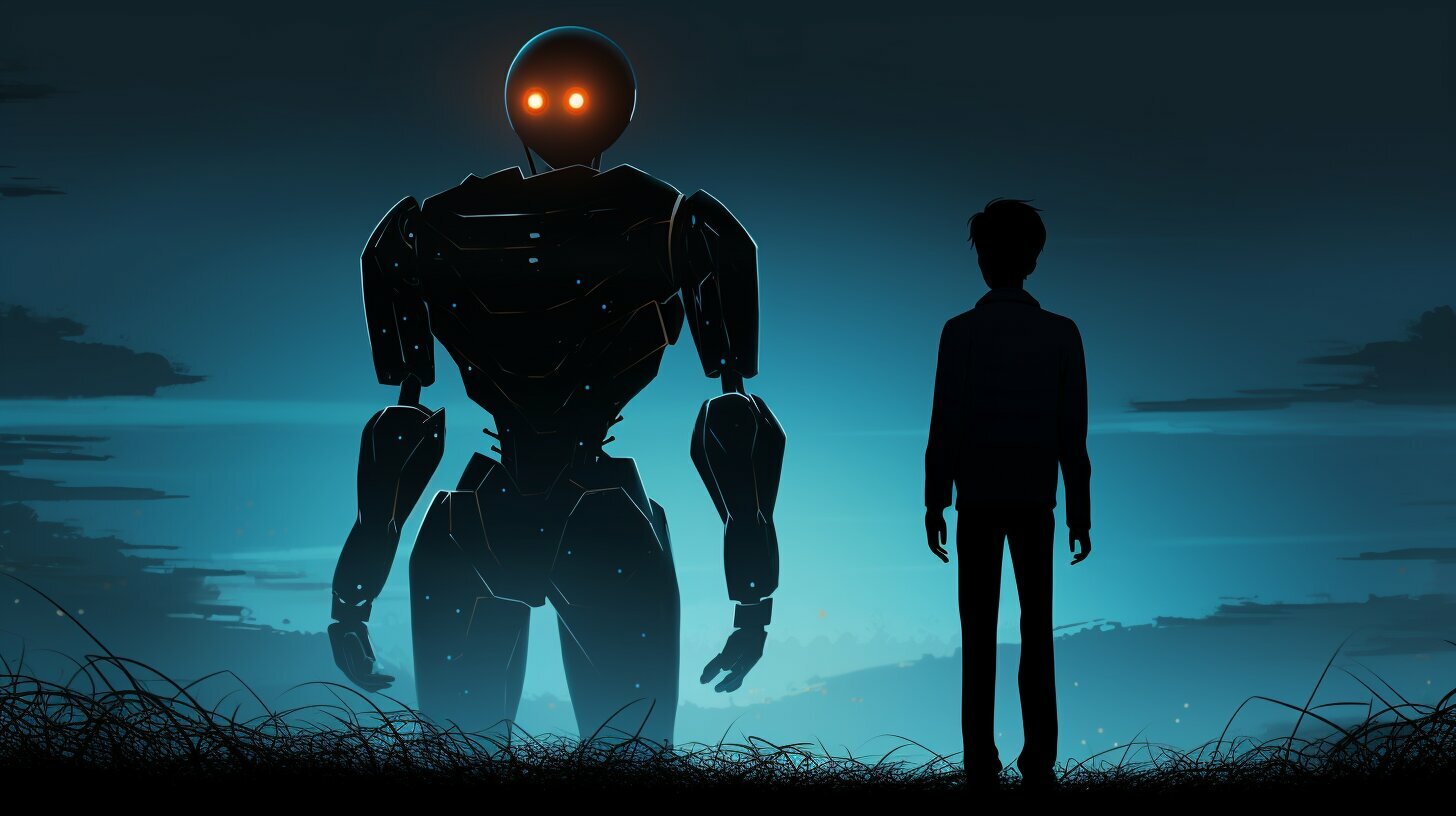We are witnessing a technological revolution in the form of computer vision. This cutting-edge subfield of artificial intelligence (AI) holds immense potential to transform various industries by equipping machines with the ability to interpret and understand visual information. Fueling this progress are deep learning algorithms that take inspiration from the human brain and achieve remarkable results in tasks such as object recognition and image segmentation.
Computer vision finds applications in numerous fields, including healthcare, agriculture, security, and transportation. Despite challenges like data labeling and generalization, researchers are continually exploring novel approaches to training AI models and developing robust systems that push the boundaries of what is possible.
Key Takeaways:
- Computer vision technology has the potential to revolutionize various industries.
- Deep learning algorithms have played a crucial role in advancing computer vision.
- Applications of computer vision span healthcare, agriculture, security, and transportation.
- Challenges like data labeling and generalization drive ongoing research and innovation.
- Computer vision brings new possibilities for creativity and productivity across industries.
Transforming Healthcare with Computer Vision
Computer vision technology is making significant strides in transforming the healthcare industry. With its ability to analyze medical images, such as X-rays, MRIs, and CT scans, computer vision algorithms are revolutionizing the way doctors diagnose diseases. By identifying abnormalities and patterns in these images, AI-powered algorithms can enable earlier and more accurate diagnoses, ultimately improving patient outcomes and reducing the workload on medical professionals.
Implementing computer vision in healthcare allows for more efficient and precise diagnoses. Doctors can rely on AI algorithms to assist them in detecting even the smallest anomalies that may be missed by the human eye. This technology acts as a valuable support tool for medical professionals, enhancing their decision-making process and ensuring that patients receive the best possible care.
Furthermore, computer vision technology is streamlining the field of radiology and reducing healthcare costs. By automating the analysis of medical images, computer vision algorithms eliminate the need for manual interpretation, saving time and resources. This enables medical facilities to provide faster and more accurate diagnoses, improving patient care and optimizing the utilization of healthcare resources.
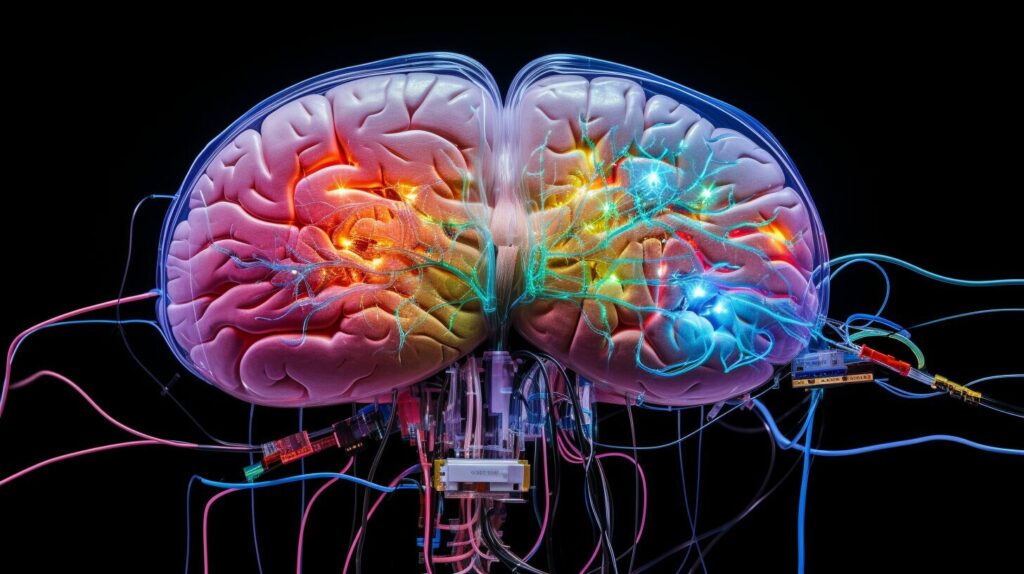
In conclusion, computer vision is transforming healthcare by providing invaluable support to medical professionals in diagnosing diseases, improving the accuracy and speed of diagnoses, and ultimately enhancing patient outcomes. By harnessing the power of AI algorithms and medical image analysis, computer vision is revolutionizing the way healthcare is delivered, paving the way for a more efficient and effective healthcare system.
Revolutionizing Retail with Computer Vision
Computer vision technology is revolutionizing the retail industry, particularly in the era of e-commerce. With the ability to analyze consumer behaviors and preferences, computer vision systems have the power to recommend personalized products to customers, enhancing their shopping experience and boosting sales. By leveraging artificial intelligence algorithms, retailers can gain valuable insights into customer preferences and tailor their product offerings accordingly.
One of the key applications of computer vision in retail is the automation of inventory management. By monitoring shelves and using image analysis, computer vision systems can detect stock shortages or irregularities in real-time. This not only improves efficiency by quickly identifying areas that need restocking but also helps prevent theft and minimize losses. With computer vision technology, retailers can optimize their inventory control processes and ensure that products are always available to meet consumer demands.
Furthermore, computer vision is enabling retailers to provide innovative shopping experiences. Virtual try-on technology, powered by computer vision algorithms, allows customers to visualize how products such as clothing and accessories will look on them before making a purchase. This enhances the online shopping experience, reducing the need for returns and improving customer satisfaction. Additionally, computer vision can be used to analyze foot traffic patterns within physical stores, helping retailers optimize store layouts and improve customer flow.
“Computer vision technology has unleashed new possibilities for the retail industry. By understanding consumer preferences, automating inventory management, and providing innovative shopping experiences, retailers can stay ahead of the competition and deliver personalized solutions to their customers.” – Retail Innovations Magazine
Key Benefits of Computer Vision in Retail:
- Personalized product recommendations
- Efficient inventory management
- Innovative shopping experiences
- Optimized store layouts
- Improved customer satisfaction
With the continuous advancements in computer vision technology, retail businesses have the opportunity to transform the way they operate and engage with customers. By harnessing the power of computer vision, retailers can unlock new levels of personalization, streamline operations, and ultimately drive growth in the highly competitive retail market.
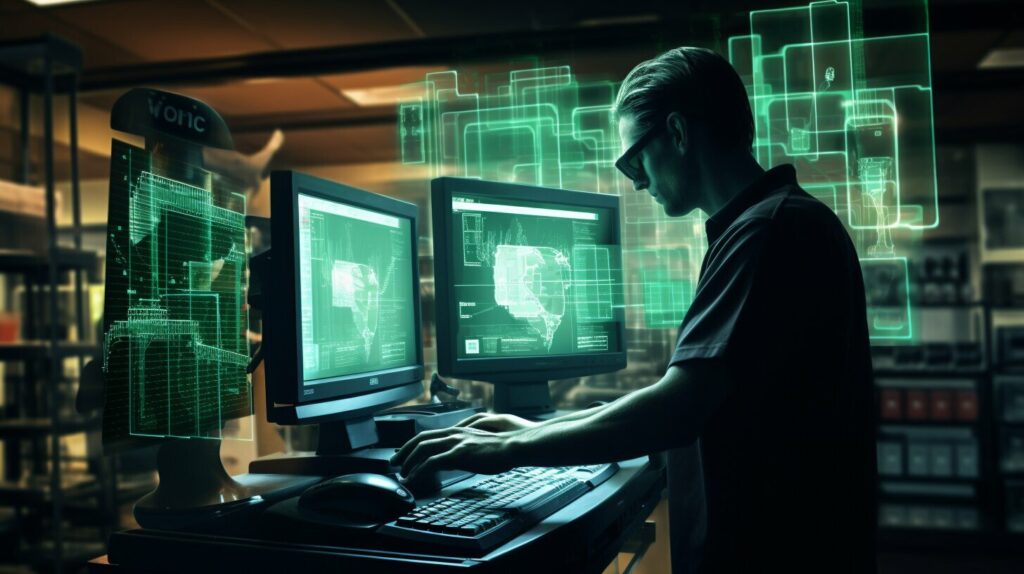
Enhancing Transportation with Computer Vision
Computer vision technology is revolutionizing the transportation industry, particularly in the realm of autonomous vehicles. With the ability to analyze visual data from cameras and sensors, computer vision algorithms are enhancing the safety and efficiency of self-driving cars. By accurately detecting and classifying objects on the road, these algorithms enable autonomous vehicles to navigate complex traffic environments with precision and confidence.
Object detection is a key application of computer vision in autonomous vehicles. It allows the system to identify and track various objects such as pedestrians, cyclists, and other vehicles, ensuring that the autonomous vehicle can react appropriately and make informed decisions in real-time. Additionally, computer vision technology is being used to analyze traffic patterns and optimize traffic control systems, reducing congestion and improving the overall flow of vehicles on the road.
Computer vision plays a vital role in the development of autonomous vehicles.
Furthermore, computer vision is instrumental in improving the safety of transportation systems. By continuously monitoring the road, computer vision algorithms can detect and alert drivers to potential hazards, such as sudden lane changes or obstacles in the road. This technology enhances the overall situational awareness of drivers and reduces the risk of accidents.
Table: Applications of Computer Vision in Transportation
| Application | Description |
|---|---|
| Autonomous Vehicles | Computer vision enables autonomous vehicles to detect and classify objects on the road, enhancing safety and efficiency. |
| Traffic Control | Computer vision analyzes traffic patterns to optimize signal timings and reduce congestion. |
| Driver Assistance | Computer vision technology assists drivers by detecting potential hazards and providing real-time alerts. |
| Smart Parking | Computer vision systems can identify available parking spaces and assist drivers in finding parking efficiently. |
With the continued advancements in computer vision technology, the transportation industry is poised for significant transformation. As the technology becomes more robust, we can expect to see further improvements in the safety, efficiency, and overall experience of transportation systems. From autonomous vehicles to traffic control, computer vision is paving the way for a smarter, more connected future of transportation.
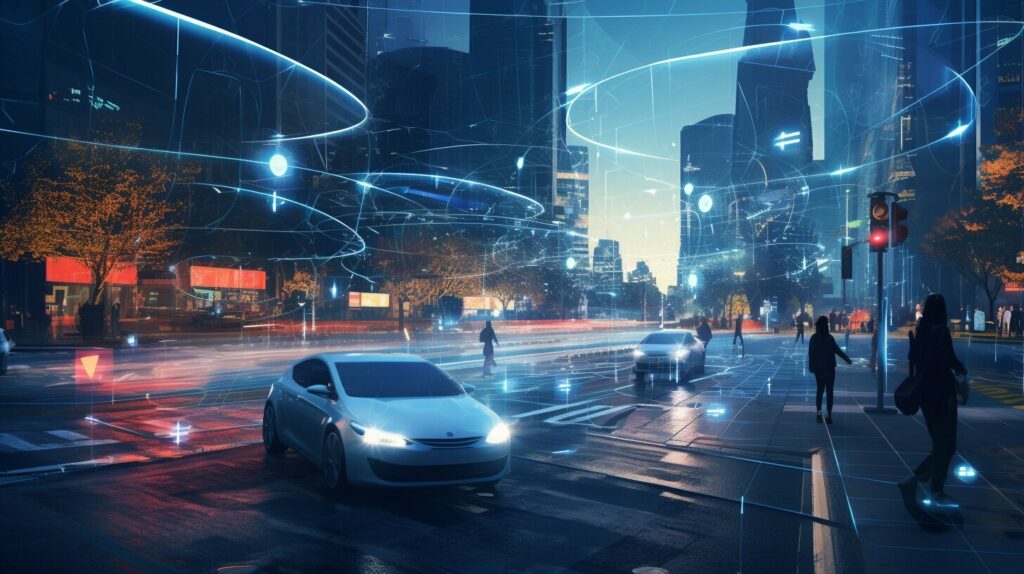
Transforming Manufacturing with Computer Vision
Computer vision technology is revolutionizing the manufacturing sector, bringing about significant improvements in quality control, object recognition, and productivity. By deploying computer vision systems on production lines, manufacturers can streamline their operations and ensure the highest quality standards for their products.
One of the key applications of computer vision in manufacturing is in quality control. Computer vision systems can analyze visual data in real-time, identifying defects, inconsistencies, or other abnormalities in products. This enables manufacturers to take immediate corrective actions, reducing waste and improving overall product quality.
Additionally, computer vision plays a crucial role in object recognition within the manufacturing process. By training computer vision algorithms to recognize specific objects or components, manufacturers can automate complex tasks such as picking and sorting. This not only enhances efficiency but also reduces the risk of human error, leading to increased productivity.
Moreover, computer vision technology can be integrated with robotic systems in the manufacturing industry. By combining computer vision with robotics, manufacturers can enhance their automation capabilities, leading to improved precision and faster production cycles. This can help manufacturers meet increased demand and stay competitive in a rapidly evolving market.
| Benefits of Computer Vision in Manufacturing: |
|---|
| Improved quality control |
| Automated object recognition |
| Enhanced productivity |
| Efficient automation with robotics |
Table: Benefits of Computer Vision in Manufacturing
Unleashing Creativity in Art with Computer Vision
In the realm of art, computer vision technology is unleashing a new wave of creativity and innovation. Through image recognition capabilities, artists are able to delve into vast databases of images, finding inspiration for their work and expanding their artistic horizons. The ability to search and sort through images with precision allows artists to uncover hidden connections, uncovering new perspectives and ideas that they may not have discovered otherwise. This fusion of art and technology opens up endless possibilities for creating unique and captivating artwork.
One of the most exciting applications of computer vision in art is style transfer. This technique enables artists to blend different visual aesthetics, combining the elements of various art styles to create something entirely new. By using deep learning algorithms, computer vision systems can analyze the composition, color palette, and brushstrokes of famous artworks, and then apply those characteristics to different images. This transformative process allows artists to explore new artistic directions, pushing the boundaries of their own creativity.
Computer vision technology is revolutionizing the world of art by allowing artists to explore new possibilities and create immersive experiences.
Furthermore, computer vision enables object detection and tracking, paving the way for interactive art experiences that respond to viewer movements. Artists can create installations and exhibitions that engage and captivate audiences by using computer vision systems to detect and analyze viewer interactions. This interaction between technology and art creates a dynamic and immersive experience, blurring the boundaries between the physical and digital worlds.
Unleashing the Potential of Computer Vision in Art
The potential of computer vision in the art world is vast. It allows artists to explore new forms of expression, discover hidden connections, and create art that resonates with viewers on a deeper level. By leveraging the power of image recognition, style transfer, and interactive experiences, computer vision is revolutionizing the creative process and opening up new avenues for artistic exploration.
“Computer vision technology is revolutionizing the world of art by allowing artists to explore new possibilities and create immersive experiences.”
As computer vision technology continues to advance, we can expect to see even more groundbreaking applications in the art world. From virtual reality experiences to augmented reality installations, the fusion of computer vision and art has the potential to transform the way we perceive and interact with artistic creations. The future of art is undoubtedly being shaped by the limitless possibilities of computer vision, and we are only beginning to scratch the surface of what this transformative technology can achieve.
Table: Applications of Computer Vision in Art

| Application | Description |
|---|---|
| Image Recognition | Artists can search and sort through vast image databases, finding inspiration and expanding their creative horizons. |
| Style Transfer | Computer vision algorithms can blend different art styles, allowing artists to create unique and captivating artwork. |
| Interactive Art | Computer vision enables the creation of interactive art experiences that respond to viewer movements, blurring the boundaries between the physical and digital worlds. |
Conclusion
Computer vision is a transformative technology that has the potential to revolutionize various industries. From healthcare to retail, transportation to manufacturing, computer vision is enhancing efficiency, improving decision-making processes, and unlocking new possibilities in innovation.
By leveraging the power of artificial intelligence and deep learning algorithms, computer vision enables machines to interpret and understand visual information, paving the way for advancements in image analysis and object recognition. This transformative technology is already making significant impacts in healthcare, where it assists in diagnosing diseases by analyzing medical images such as X-rays and CT scans.
In the retail industry, computer vision is revolutionizing the way personalized products are recommended to customers, enhancing their shopping experience and increasing sales. It is also being used to automate inventory management, improving efficiency and preventing theft.
Transportation is another sector where computer vision is playing a vital role. By accurately detecting and classifying objects on the road, computer vision algorithms are improving the safety and efficiency of autonomous vehicles. It is also being used in traffic control to optimize signals and reduce congestion.
Furthermore, computer vision is transforming the manufacturing process by enhancing quality control and increasing productivity. With the ability to quickly identify defects and errors, manufacturers can ensure the quality of their products. Computer vision also enables complex tasks such as object recognition and tracking, improving the performance of robotic systems.
Finally, computer vision is unleashing creativity in the art world. Artists can now explore new possibilities and create immersive experiences using image recognition and style transfer techniques. The fusion of augmented reality and computer vision opens up new dimensions in art, allowing for interactive experiences that respond to viewer movements.
In conclusion, computer vision is a transformative technology that is reshaping industries, driving innovation, and pushing boundaries. With continued research and collaboration, we can expect computer vision to unlock even more forms of creativity and productivity in the future.
FAQ
What is computer vision?
Computer vision is a subfield of artificial intelligence (AI) that focuses on enabling machines to interpret and understand visual information.
How does deep learning contribute to computer vision?
Deep learning algorithms, inspired by the human brain, have played a crucial role in advancing computer vision by achieving remarkable success in tasks such as object recognition and image segmentation.
What are the applications of computer vision?
Computer vision has vast applications in various industries, including healthcare, agriculture, security, and transportation.
How does computer vision benefit the healthcare industry?
Computer vision algorithms can analyze medical images such as X-rays, MRIs, and CT scans, assisting doctors in diagnosing diseases and potentially improving patient outcomes.
In what ways is computer vision revolutionizing the retail industry?
Computer vision systems can analyze consumer behaviors and preferences, recommending personalized products to customers and automating inventory management to enhance the shopping experience and increase sales.
How does computer vision contribute to the development of autonomous vehicles?
Computer vision algorithms analyze visual data from cameras and sensors, accurately detecting and classifying objects on the road, enhancing the safety and efficiency of self-driving cars.
What impact does computer vision have on the manufacturing sector?
Computer vision improves quality control by quickly identifying defects and errors on production lines and enhances productivity by enabling robotic systems to perform complex tasks like object recognition and tracking.
In what ways does computer vision contribute to the world of art?
Computer vision allows artists to explore new possibilities by searching image databases for inspiration, blending visual aesthetics through style transfer techniques, and creating interactive art experiences that respond to viewer movements.
Source Links
- https://ts2.space/en/computer-vision-the-key-to-unleashing-ais-potential-in-image-analysis-and-understanding/
- https://augmentedstartups.medium.com/unleashing-creativity-how-computer-vision-in-art-takes-the-creative-process-to-new-heights-9e93d065743d
- https://jotly.ai/unleashing-the-potential-how-computer-vision-is-disrupting-multiple-sectors/

